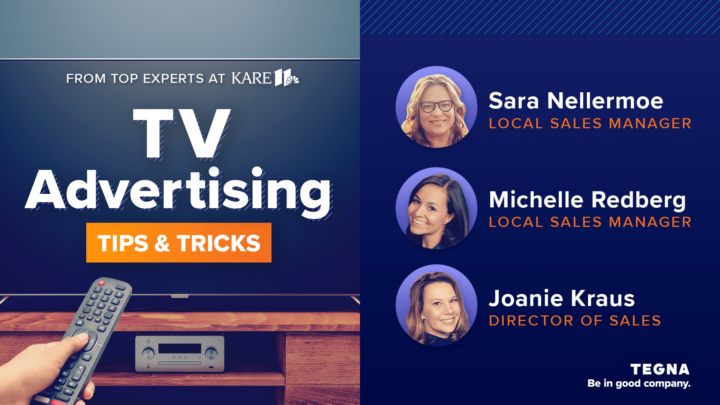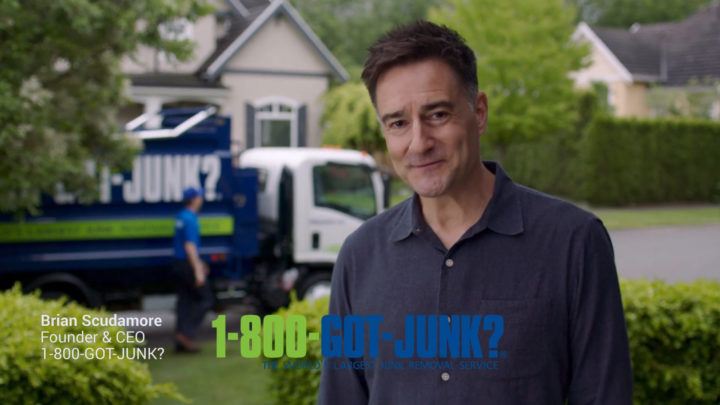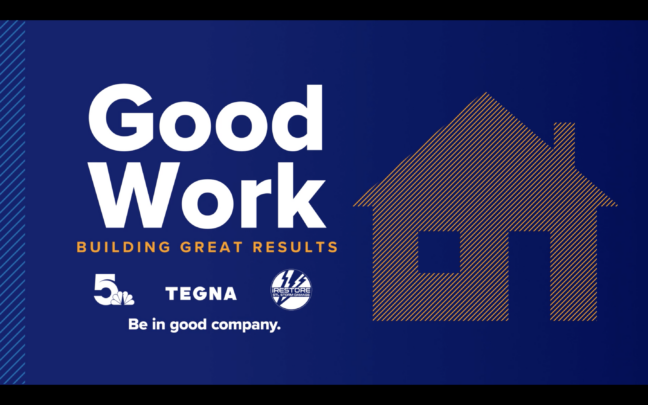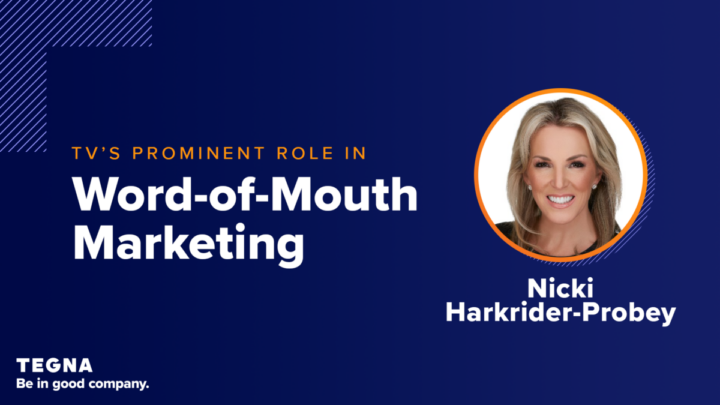Any Form of Certainty in an Uncertain Environment is a Competitive Advantage
As TEGNA’s Vice President of Marketing, Meredith Conte has spoken with hundreds of our partners. As the close of 2021 draws near, she reflects on key learnings tied to data, streaming, the labor market, and the all-important trust factor.

 By Meredith Conte, VP of Consumer & Ad Sales Marketing, TEGNA
By Meredith Conte, VP of Consumer & Ad Sales Marketing, TEGNA
How do you sum up a year like 2021? A year of uncertainty that required marketers to work with Herculean agility while exercising extraordinary patience as plans were constantly disrupted.
Throughout the year, marketing partners shared stories with me of brands reallocating budgets to be more agile, of creative teams increasing output due to a desire for more data-driven messaging, of leaders struggling to retain teams amidst the “Great Resignation,” of executives returning to school to understand the explosion of Ad Tech, of brands embarking on new journeys of inclusiveness, and so much more.
And while all the executives I spoke with throughout the year recounted numerous struggles, they also said it was one of the most exciting years of their career. New technologies, new consumer habits and expectations, new employee demands … it all made for one heck of a ride, particularly through our lens at TEGNA, where we’ve observed these changes materialize both locally and nationally.
The Labor Market: Not Just an HR Problem
We can’t talk about 2021 without talking about the labor market. According to the Wall Street Journal, Americans handed in nearly 39M resignations in the first 10 months of 2021 – more than any other year since tracking began in 2000. It makes sense then why at TEGNA, we saw a surge in clients seeking our help with talent acquisition and employer branding. The pandemic left a myriad of industries and organizations with a reduced workforce, escalating the national unemployment rate to historic highs.
As the nation tried to reopen, recruitment accordingly became a high priority. However, despite the abundance of job openings, many businesses still found it challenging to attract qualified applicants. Several studies have shown strong sentiments among workers around being overworked, underpaid, and underappreciated by their employers. Brands and businesses that addressed these concerns saw the biggest gains with their labor force.
Andrew Janison, CEO of Transwest, saw the impact of labor shortages firsthand. He adjusted his employer value proposition, created a $5,000 signing bonus for new employees, and partnered with TEGNA’s KING5 to amplify Transwest career opportunities in the Pacific Northwest. Through compelling original content and on-air advertising, Transwest met 70% of its hiring goals in just one week.
Similarly, Blair Jordan, franchise owner of Christian Brothers Automotive in Texas, saw the need to amplify his employer brand to attract best-in-class technicians. Blair shared, “Just as we want to drive brand awareness to our customer base, it’s been just as important to grow brand awareness among prospective technicians and the teams in our offices. The way we treat our teams is exceptional, making Christian Brothers one of the best places to work in the industry. Getting that message out to future team members had to be part of our overall business strategy.”
Janison and Jordan’s situations are not uncommon. Both executives have learned that employer branding and recruiting is now as much of a marketing challenge as it is for human resources. For that reason, experts anticipate double-digit increases in spending against employer branding in 2022 as companies continue to battle the talent wars.
Shifting with the Eyeballs: Speeding into Streaming
Beyond challenges introduced by the labor market, marketers faced new challenges brought on by shifting media habits. According to a 2021 survey from the Trade Desk, nearly half (49%) of U.S. TV viewers are watching more television since the pandemic began, and 1 in 4 are watching on two different devices on average. Streaming has become an increasingly common way for many people to access TV, and marketers have followed suit, even here at TEGNA.
Jennifer Woodruff, head of marketing and brand for TEGNA’s Portland, Oregon affiliate, KGW notes that to increase audience, the team expanded its media mix into places like Roku, YouTubeTV, and Premion. “Consumers’ mass consumption of content strengthened our decision to double down on a video-centric approach, and the brand safety commitments made by select streaming platforms gave our team confidence that KGW messaging would land in high-quality, well-targeted inventory,” said Woodruff.
To complement the streaming approach, KGW, alongside all TEGNA affiliates, launched an all-new streaming app promising live and on-demand content. This combination of a streaming experience with streaming advertising helped ensure KGW appeared anywhere consumers were seeking high-fidelity content.
The shift to streaming was not limited only to media companies. From automotive dealers to home services businesses to quick-service restaurants and more, TEGNA saw an increasing number of our clients capitalize on this trend by advertising through our industry-leading streaming TV advertising platform, Premion. These clients are part of a growing market for streaming advertising. This year, projections for the U.S. connected TV (CTV) upfront spending doubled to $4.5 billion and are expected to reach $6 billion in 2022, with overall U.S. CTV advertising hitting $19.1 billion in 2022, according to eMarketer.
Measurement: All About the ROI
2021 also saw growing frustration with traditional media measurement systems. Advertisers are increasingly focused on media ROI tied to the bottom line, especially small business owners whose money must work harder for them than ever before.
On measurement, Jordan shared, “One of the important things as a small business owner is to measure every dollar you spend in marketing and make sure it’s providing a return. Historically there has not been an effective way of measuring the impact of our previous marketing channels. TEGNA’s attribution capabilities have given us the ability to see the return on our marketing spend. Instead of counting our losses or our wins after the fact, we’re now using real data, which helps us understand which of our dollars we’re spending are working and when we need to pivot to ensure no dollars are wasted.”
With increasing pressure from C-suites and shareholders combined with instability in the measurement ecosystem, marketers are in a new era of accountability. Our clients especially count on us to show the correlation between marketing spend and business results.
General Manager of Honda and Toyota of Seattle, Tim Miller, agrees. “The outcome and results we’ve seen through attribution are directly in our showrooms, in our service department. We can watch the creative we distribute, see it impact our bottom line and through attribution, know what’s actually working and what’s not.”
In a business as disrupted by the pandemic as auto, Miller and Jordan’s points about data-driven results embody what we’ve heard from clients all throughout 2021. Any form of certainty in an uncertain environment is a competitive advantage.
Marketing’s New Currency: The Rise of Customer Data
Leaders like Miller have to manage the evolving and diverse expectations of a wide swath of consumers. In fact, in an Uberall Study, even though slightly more than half (54%) prefer to make their final purchases online, 74% of shoppers visit a brick-and-mortar location at some point in their path to purchase. This forces today’s brands to deliver an exceptional e-commerce experience but also maintain a top-tier in-store experience.
A hybrid lifestyle typified by the marriage of online and offline experiences – whether tied to shopping, working, exercising, and more – is here to stay. According to McKinsey & Company, “Omnichannel shopping is ascendant, with about 60 to 70 percent of consumers researching and purchasing both in-store and online across categories.” This forces upon marketers the need for increased segmentation and audience understanding.
The key to that understanding? Data.
Out with cookies and in with first-party data has been an ongoing trend throughout 2021. With the end of cookies looming, marketers marched forward with first-party data plans. Customer Data Platforms (also known as CDPs) are becoming the new standard for businesses to best understand their customer and gain their trust. That said, with data and an era of permission-based marketing comes to the need for an all-new marketing infrastructure complete with input from technology, legal, and product teams.
The marketers I’ve spoken to throughout 2021 have all acknowledged data is the new currency, but few have truly figured out the data puzzle and many have shared fears about how to build out the proper collection, storage, governance, and use of customer data. In fact, fears around the misuse of data have many brand leaders partnering closely with communications teams in anticipation of the day when data goes wrong.
Back to Basics: Earning Trust
Whether you’re talking about the labor market, measurement, data, or changing behaviors and expectations, to me, the keyword that defined 2021 was trust. Wearied by the pandemic, technological forces, and shifting senses of normalcy, consumers simply craved a basic but demonstrable display of trust, from people, brands, and experiences.
Analysts at Forrester write, “Savvy leaders who have embraced the trust imperative know that trust is not a buzzword and that it doesn’t happen accidentally. In the coming year, these leaders will take concrete steps to build this trust. And conversely, brands that fail to build trust will languish.”
In a year marked by increasing complexity, consumers and clients yearned for honest interactions and human-centered relationships they could count on. It’s why our clients come back to us day after day. We focus on being trustworthy, reliable partners you can depend on to deliver results, both to our customers and to the communities we serve. We pride ourselves on empowering our partners with good people, good solutions, good data, and good outcomes. Nothing fancy, nothing complicated. Partnerships you can trust.
On why he continues to work with TEGNA, Youval Meicler, founder of Texas Mattress Makers and Living Designs Furniture, said it well, “TEGNA is a large contributor of why we do the things that we do and the directions that we take. Really that’s as simple as that. If you go back to the partnership, if you trust someone and you know that your wellbeing is in their thought process, then it’s a very easy decision to make.”





















